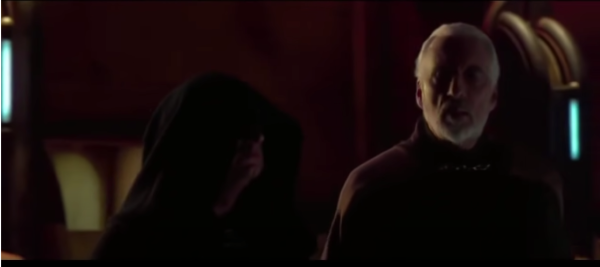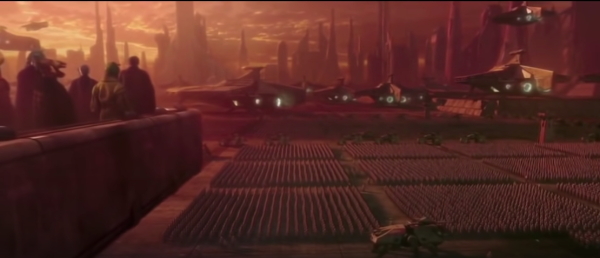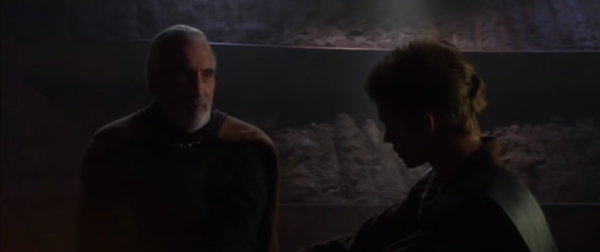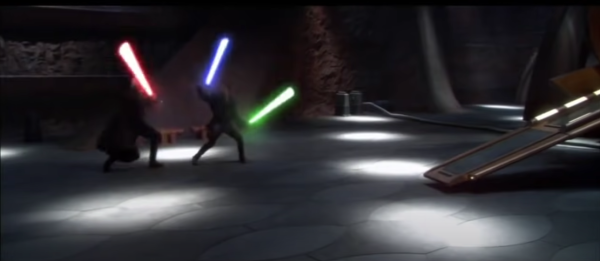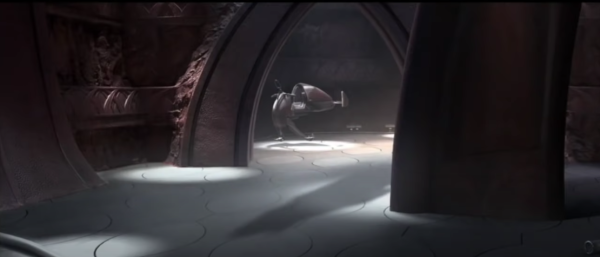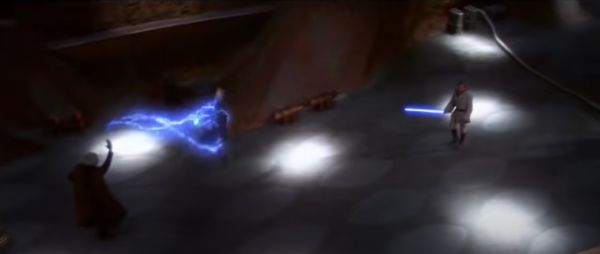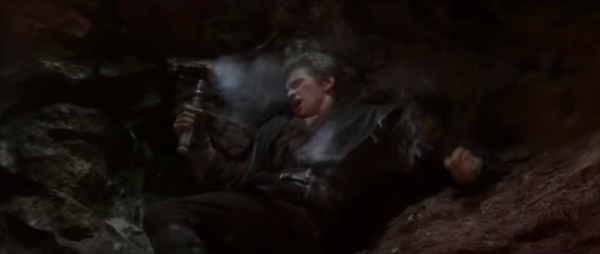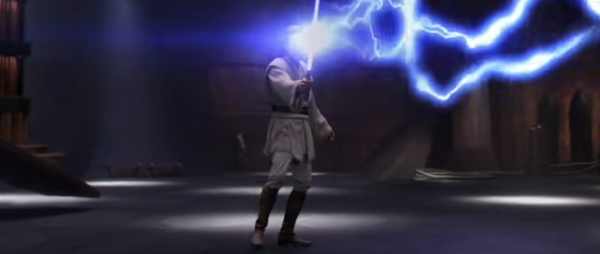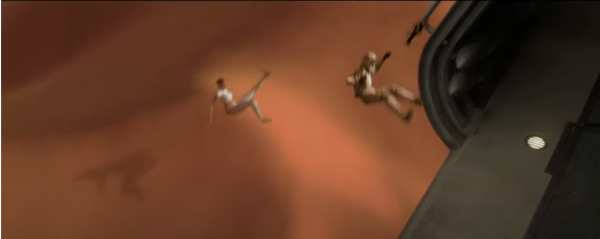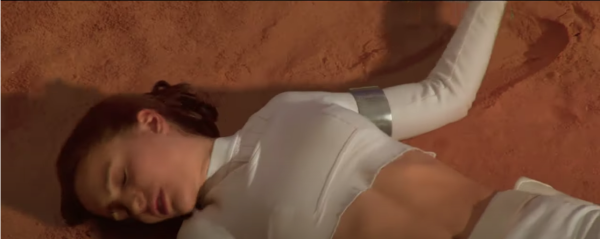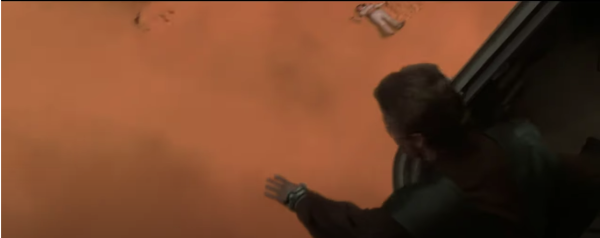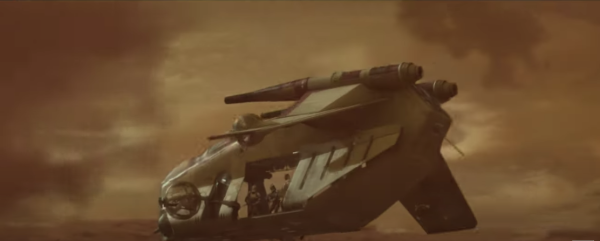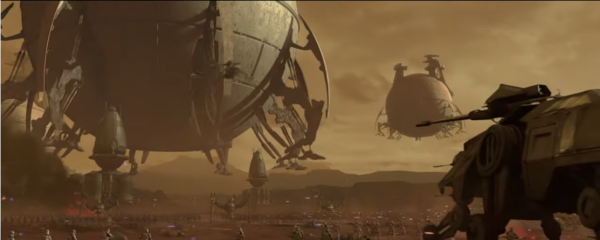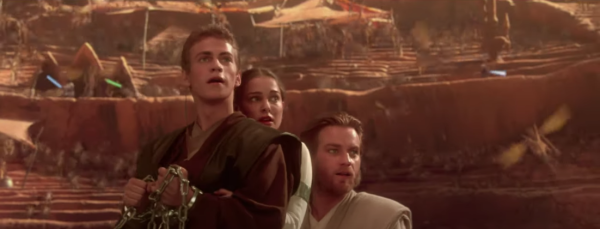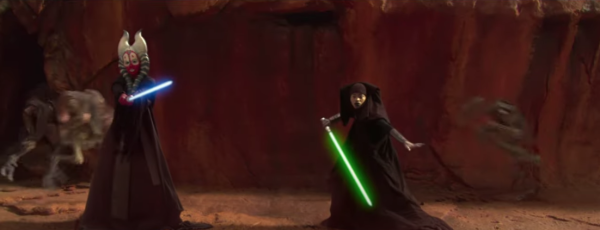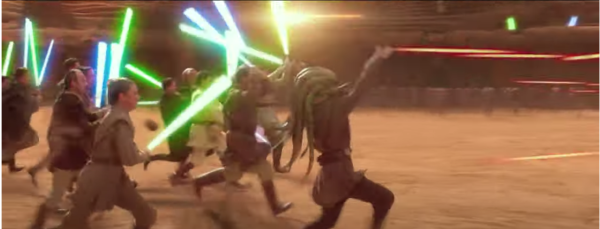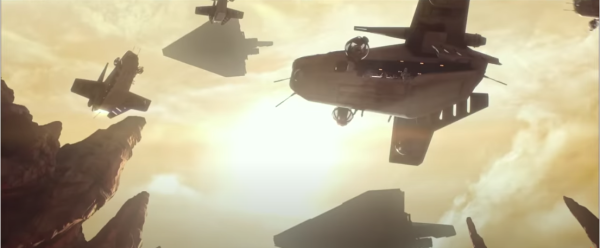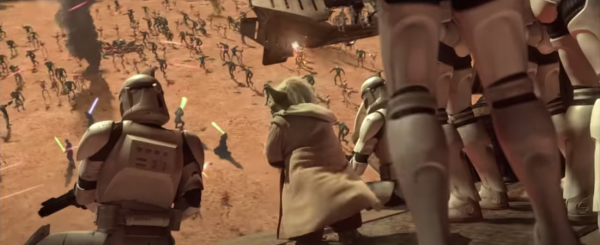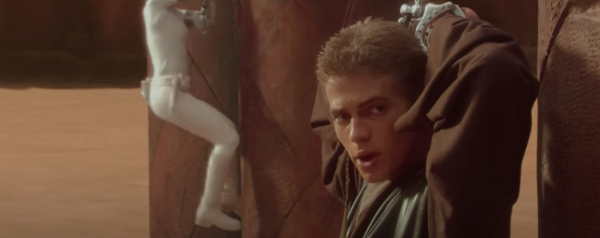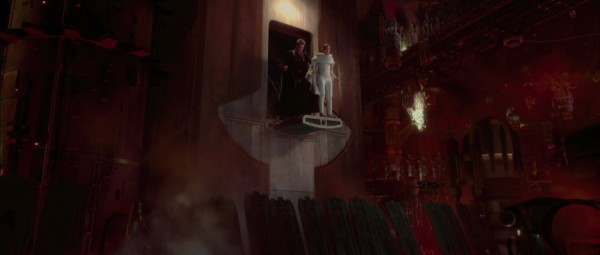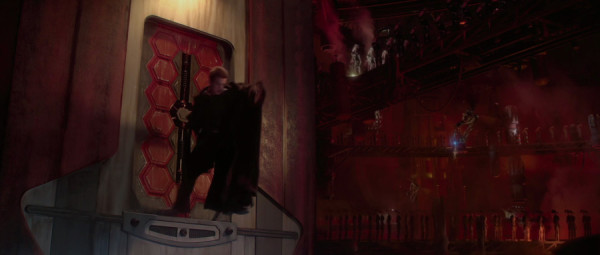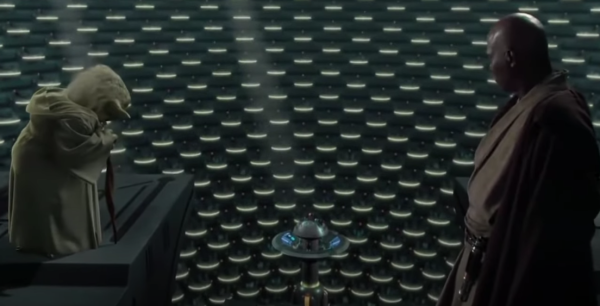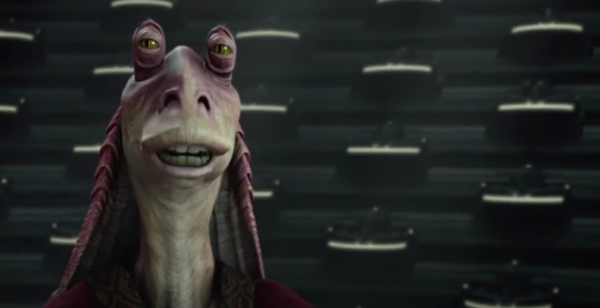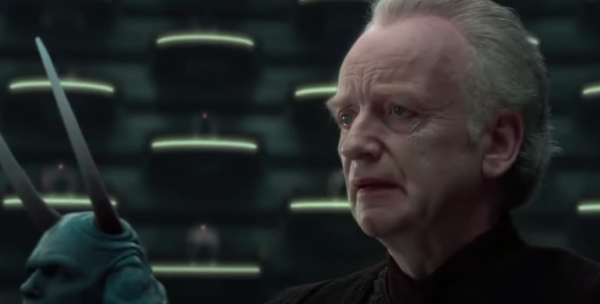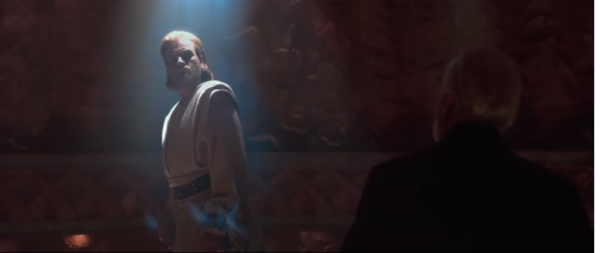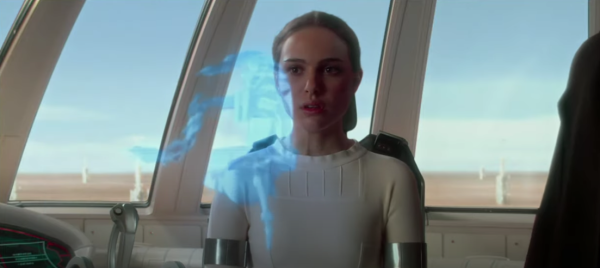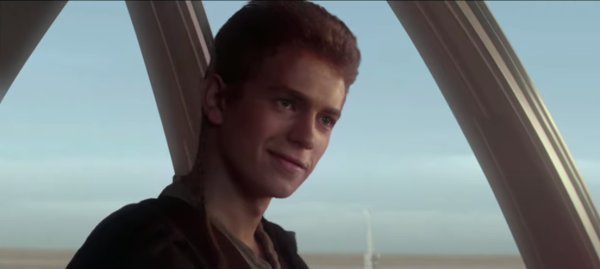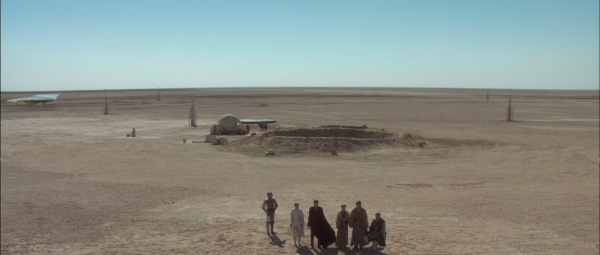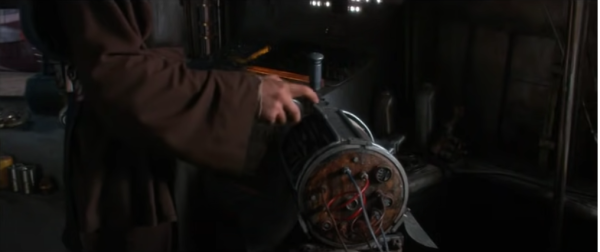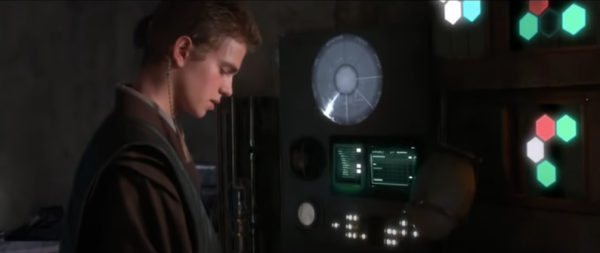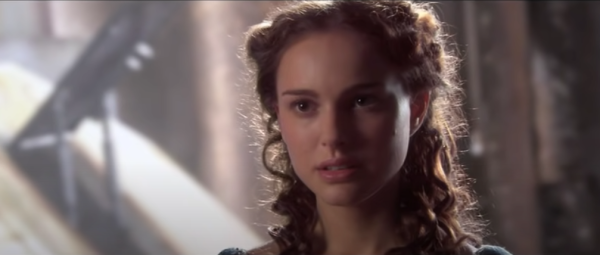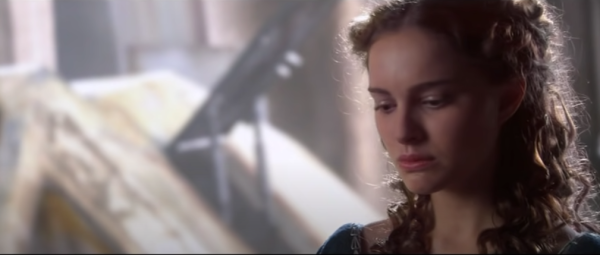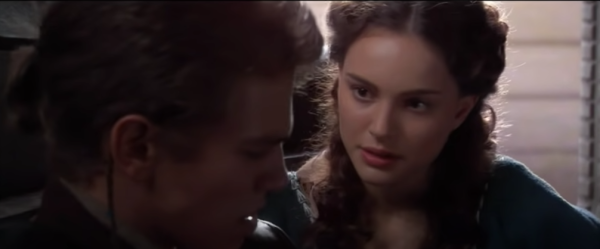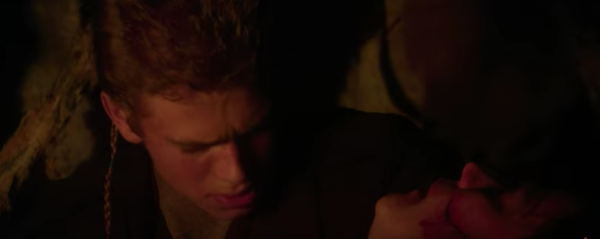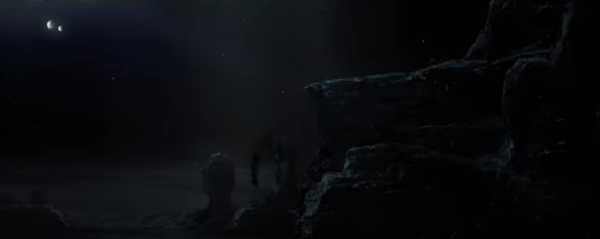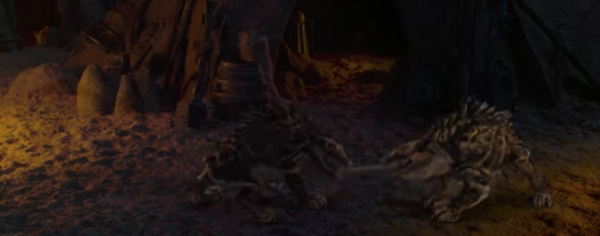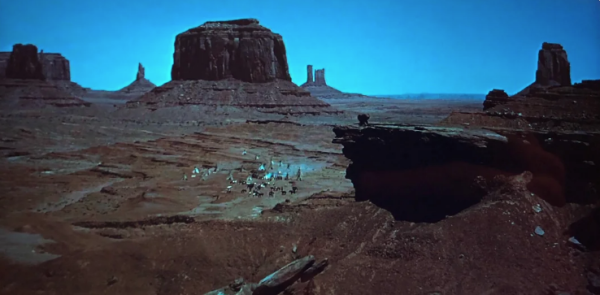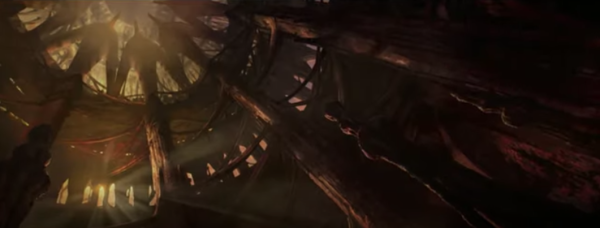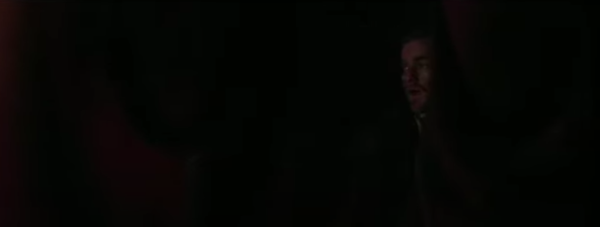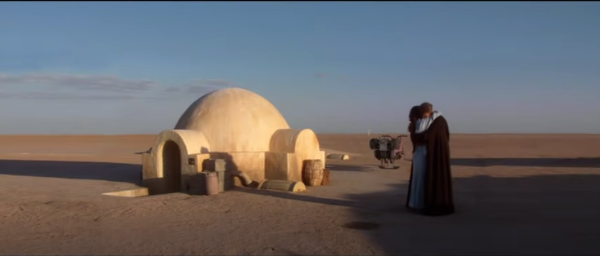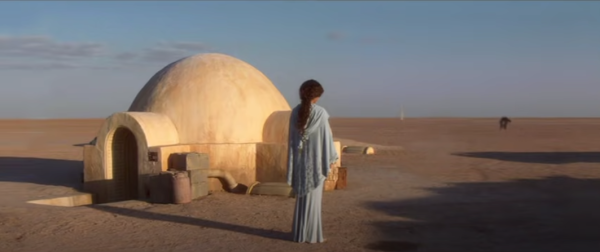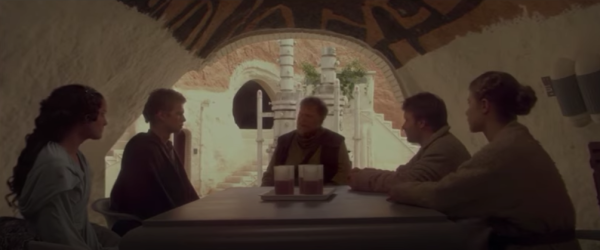A Thousand Stars: Episode II, Part 44
Oct. 19th, 2023 09:17 amJuxtaposition might just be my favorite storytelling technique. To place two dramatically different things alongside each other, creating meaning in the contrast. And in the saga, it shows up perhaps nowhere more strongly than the final two scenes of Episode II. We just examined the Grand Army of the Republic, a vast force on its way to spreading throughout the entire galaxy. From there we transition directly to this shot.
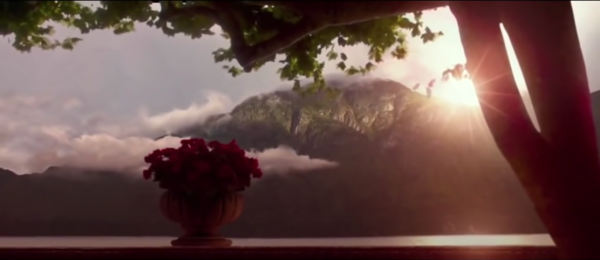
Huh? There's not even any people in it. Just a distant hill, a tree and flowers. All symbols of pure, undisturbed nature. The serene surface of the lake. But also -- a setting sun. And clouds creeping across the hill. The serenity is nearing an end.
Then we get a wider shot, revealing a tableaux recognizable in almost any culture.

No words are necessary. Watch the progression of the ceremony in a few simple shots.

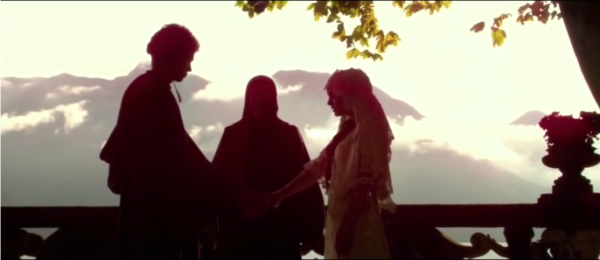

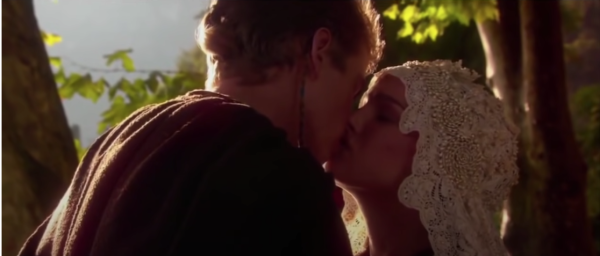
Taking each other's hands is a clear symbol of joining together as a couple, but also a striking image of Padmé accepting Anakin's mechanical hand, thus also accepting the darker parts of him. And this kiss is a bookend for the interrupted kiss in the same location. All told without words, without any need for further explanation.
Simple and brief -- yet in comparison to the scene we just left in the capital, it's a long, indulgent lingering on tiny little details. Naturally the mobilization of a galactic army would deserve attention. Why is the same, even more, time spent on a wedding? Two measly people. Only two witnesses, of the lowest class (droids are basically the servant caste, y'know.)

What's the big deal about this couple, anyway? Why should it matter?

If you're familiar with the later episodes, then of course you know. Anakin's going to become the fearsome right hand of the Emperor, and their children will be the only hope for the galaxy. And here's where I really, really love the message of Star Wars. This juxtaposition of mighty armies in space alongside quiet intimate relationships is going to show up again in the final showdown of Episode VI, and what a powerful contrast it is. The space battle is thrilling and all, but it is nothing, nothing at all next to the battle for Luke's soul. It is that battle that really matters, and in turn the battle for Anakin's soul.
You see, the decisive factor in the galaxy's fate is not Star Destroyers or masses of stormtroopers. It's a family. A broken, lost family that finds healing, and overcomes evil with the power of faith and love.

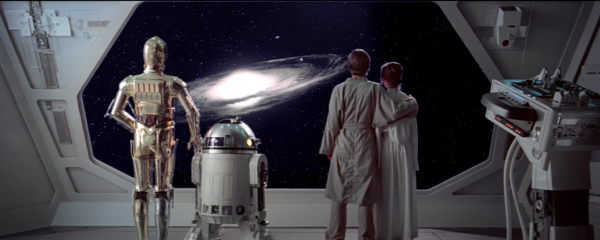
Just as Anakin and Padmé look out to an uncertain future, with their love as the only sure thing in their lives, their children will stand together, facing terrible uncertainties but steady in their support of each other. And they will save the galaxy. It all starts here.
Next time, the start of Episode III!

Huh? There's not even any people in it. Just a distant hill, a tree and flowers. All symbols of pure, undisturbed nature. The serene surface of the lake. But also -- a setting sun. And clouds creeping across the hill. The serenity is nearing an end.
Then we get a wider shot, revealing a tableaux recognizable in almost any culture.

No words are necessary. Watch the progression of the ceremony in a few simple shots.




Taking each other's hands is a clear symbol of joining together as a couple, but also a striking image of Padmé accepting Anakin's mechanical hand, thus also accepting the darker parts of him. And this kiss is a bookend for the interrupted kiss in the same location. All told without words, without any need for further explanation.
Simple and brief -- yet in comparison to the scene we just left in the capital, it's a long, indulgent lingering on tiny little details. Naturally the mobilization of a galactic army would deserve attention. Why is the same, even more, time spent on a wedding? Two measly people. Only two witnesses, of the lowest class (droids are basically the servant caste, y'know.)

What's the big deal about this couple, anyway? Why should it matter?

If you're familiar with the later episodes, then of course you know. Anakin's going to become the fearsome right hand of the Emperor, and their children will be the only hope for the galaxy. And here's where I really, really love the message of Star Wars. This juxtaposition of mighty armies in space alongside quiet intimate relationships is going to show up again in the final showdown of Episode VI, and what a powerful contrast it is. The space battle is thrilling and all, but it is nothing, nothing at all next to the battle for Luke's soul. It is that battle that really matters, and in turn the battle for Anakin's soul.
You see, the decisive factor in the galaxy's fate is not Star Destroyers or masses of stormtroopers. It's a family. A broken, lost family that finds healing, and overcomes evil with the power of faith and love.


Just as Anakin and Padmé look out to an uncertain future, with their love as the only sure thing in their lives, their children will stand together, facing terrible uncertainties but steady in their support of each other. And they will save the galaxy. It all starts here.
Next time, the start of Episode III!
